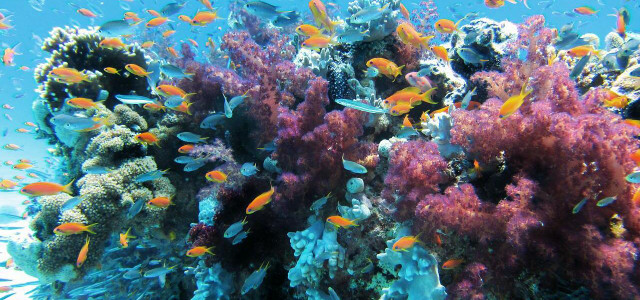Debt-for-nature-swaps rely on the idea that in exchange for debt relief, countries can reallocate their efforts to environmental work. Are they effective? Let's find out.
Debt-for-nature swaps have been gaining attention as a potential solution to the problem of unsustainable debt and environmental conservation. These agreements allow developing countries to pay off their foreign debt by committing to protect or conserve natural areas within their borders.
But are these swaps a viable solution to the pressing issues of debt and conservation? Here, we’ll explore the concept of debt-for-nature swaps and examine their potential benefits and challenges.
What Are Debt-for-Nature Swaps?

(Foto: CC0 / Pixabay / blackend464)
The concept of debt-for-nature swaps first emerged in the 1980s as a response to the growing debt crisis facing many developing countries. The idea was designed to tackle a particular system of debt observed by Dr. Thomas Lovejoy, an American ecologist who noticed that indebted countries were often forced to exploit their natural resources in order to generate income to repay their debts, leading to environmental degradation and loss of biodiversity.
Debt-for-nature or debt-for-climate swaps were proposed as a way to break this cycle by providing an alternative to resource exploitation and promoting conservation efforts in debtor nations.
Essentially, they are agreements between a debtor nation and a creditor nation or institution that enable the debtor to pay off its foreign debt by investing in environmental conservation efforts.
Why is This System Valuable?



(Foto: CC0 / Pixabay / geralt)
Debt-for-nature swaps offer several benefits to both debtor and creditor nations. For debtor nations, these agreements provide a way to reduce their foreign debt burden while also investing in conservation efforts that can have long-term economic and environmental benefits.
By investing in conservation efforts through debt for environment swaps, debtor nations can protect or restore natural areas that are vital for biodiversity and ecosystem services. These conservation efforts can help to prevent deforestation, promote sustainable agriculture, and protect endangered species, among other benefits.
Furthermore, debt-for-nature swaps can contribute to the achievement of global environmental goals, such as those outlined in the United Nations Sustainable Development Goals (SDGs) and the Paris Agreement on climate change. For example, protecting forests through debt-for-nature swaps can help to mitigate climate change by reducing greenhouse gas emissions and increasing carbon sequestration.
In fact, several successful debt-for-nature swaps have been implemented in recent years, such as Belize, where they will now be able to increase protected marine habitats by 30% by 2030. These agreements have helped to protect critical natural habitats and promote sustainable development while also reducing the burden of foreign debt.
What Are the Issues with Debt-for-Nature Swaps?



(Foto: CC0 / Pixabay / TheDigitalArtist)
While debt-for-nature swaps have shown promise as a tool for promoting environmental conservation and addressing unsustainable debt, there are also several challenges associated with these agreements. One major issue is the potential for “greenwashing” – that is, using the swaps as a way to project a positive image without actually making significant conservation efforts.
There is a risk that the funds could be misused or diverted for other purposes, undermining the potential benefits of the swaps. For instance, as mentioned in a piece by the Geographical, intermediaries such as insurers, consultants, and credit providers may receive a significant share of the funds, raising questions about the actual impact of these swaps on conservation efforts.
In addition, as noted in earlier research, there is a risk that the government in the debtor country may reduce its own budget allocation for conservation, knowing that external funds are available through the debt-for-nature swap. This could lead to the substitution of planned government expenditure on conservation and ultimately not benefit the environment.
Finally, the effectiveness of debt-for-nature swaps is limited by the size of the debt in question, and larger debts may require more substantial solutions beyond the scope of such swaps. In such cases, debt-for-nature swaps may not address the root causes of unsustainable debt and could potentially exacerbate inequalities between debtor and creditor nations.
Looking Toward the Future



(Foto: CC0 Public Domain / Unsplash / Hu Chen )
Despite the challenges associated with debt-for-nature swaps, there is continued interest in these agreements as a tool for promoting sustainable development and environmental conservation.
A group of collaborative researchers from China recently proposed how debt for nature swaps might be helpful in alleviating post-pandemic debts and increasing nature conservation. The authors suggest that the COVID-19 crisis has provided a unique opportunity to apply debt-for-nature swaps in emerging countries to reduce debt burdens while simultaneously establishing protected areas.
If implemented correctly, the practice can provide a “triple-win” mechanism that can:
- Remove financial pressures on a country
- Reduce pressures on natural resources
- Provide avenues for sustainable livelihood provisions through things like providing jobs in conservation and developing eco-tourism.
They estimate that they have the potential to swap $12-15 billion dollars, which would allow the conversion of 11-13% of the Earth’s current unprotected priority areas into protected areas, particularly bioregions such as grasslands, freshwater, and deserts. However, the authors acknowledge that maximizing the potential of such an arrangement requires a clearer understanding of costs, local capacity, and political willingness among creditors and debtors.
As it stands, the world continues to face pressing environmental and economic challenges, and debt-for-nature swaps may continue to play a role in promoting sustainable development and addressing unsustainable debt. However, it is important to carefully consider the potential benefits and challenges of these agreements and to ensure that they are used in a responsible and effective way.
Read more:
- Nature-Based Solutions: A Sustainable Approach to Save the Planet
- Rights of Nature: Global Movement, Legal Status & Potential
- Earth Day 2023: 19 Earth Day Activities to Support Our Planet
Do you like this post?







